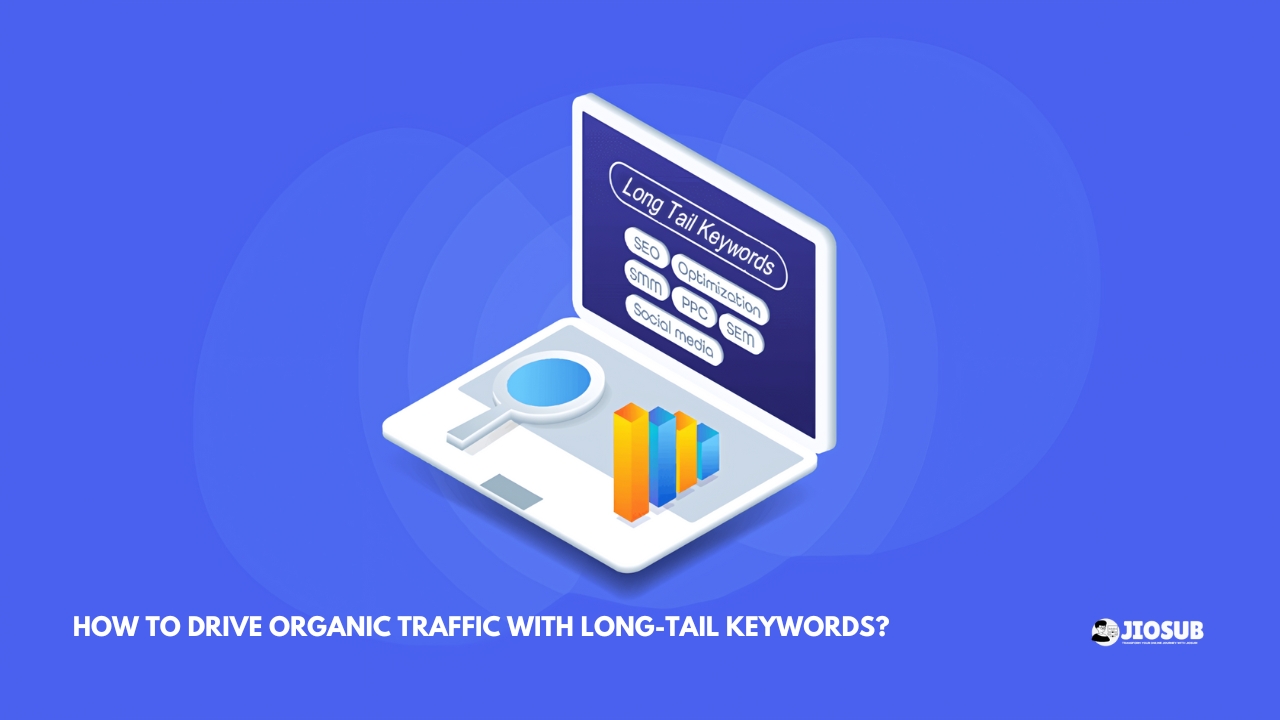To successfully boost your website’s organic traffic, leveraging long-tail keywords can be a game-changer. In this guide, we will explore the strategies, benefits, and techniques to effectively use long-tail keywords to attract and engage your target audience.
Understanding Long-Tail Keywords
Long-tail keywords are specific phrases that visitors are likely to use when they are closer to making a purchase or finding specific information. Unlike broad keywords, long-tail keywords are more targeted and often consist of three or more words. For example, “best running shoes for flat feet” is a long-tail keyword compared to “running shoes.”
Long-tail keywords are essential for capturing specific search intents. They help in narrowing down the audience to those who are more likely to convert. Understanding how to utilize long-tail keywords can significantly enhance your SEO efforts and drive more qualified traffic to your website.
Characteristics of Long-Tail Keywords
- Specificity: They target specific topics or niches.
- Lower Search Volume: They generally have fewer searches but higher conversion rates.
- Less Competition: Easier to rank for compared to short-tail keywords.
- Higher User Intent: Users are often closer to the point of purchase.
Benefits of Long-Tail Keywords

Using long-tail keywords can provide numerous advantages, especially for small and medium-sized businesses looking to improve their online visibility and drive organic traffic.
Higher Conversion Rates
Since long-tail keywords are more specific, they tend to attract users who are closer to making a decision. This specificity leads to higher conversion rates as the traffic you receive is more relevant and targeted.
Reduced Competition
Long-tail keywords face less competition compared to broader keywords. This lower competition makes it easier for your content to rank higher on search engine results pages (SERPs).
Cost-Effective SEO
Incorporating long-tail keywords into your SEO strategy can be more cost-effective than targeting highly competitive short-tail keywords. You can achieve better results with a smaller investment.
Improved User Experience
By addressing specific queries, long-tail keywords can improve user experience. Visitors are more likely to find what they are looking for, which can reduce bounce rates and increase the time spent on your site.
Examples of Long-Tail Keywords
- “Organic dog food for small breeds”
- “Affordable wedding venues in New York”
- “How to train for a marathon in 3 months”
Also Read: How to Write Compelling Headlines That Boost Click-Through Rates in 2024
How to Find Long-Tail Keywords?
Finding the right long-tail keywords involves a mix of tools, research, and understanding your audience. Here are some effective methods to identify long-tail keywords that can drive organic traffic to your site.
Keyword Research Tools
Tools like Google Keyword Planner, SEMrush, and Ahrefs can help you discover long-tail keywords. These tools provide insights into search volumes, competition levels, and keyword suggestions.
Google Autocomplete
Google’s autocomplete feature can be a goldmine for long-tail keywords. Start typing a relevant query, and Google will suggest related searches that users are performing.
Analyzing Search Queries
Look at the search queries that are already driving traffic to your site. Tools like Google Search Console can provide data on the specific queries users are typing in to find your content.
Competitor Analysis
Analyzing the keywords your competitors are ranking for can give you ideas for long-tail keywords. Tools like Ahrefs and SEMrush allow you to see which keywords are driving traffic to your competitors’ sites.
Customer Feedback and Questions
Pay attention to the questions and feedback from your customers. This can provide valuable insights into the specific phrases and topics they are interested in, which can be turned into long-tail keywords.
Using Long-Tail Keywords in Content

Once you’ve identified your long-tail keywords, the next step is to integrate them into your content in a natural and effective way. This will help improve your rankings and drive more targeted traffic.
Content Creation
Create high-quality, informative content that addresses the specific queries associated with your long-tail keywords. This could be in the form of blog posts, guides, tutorials, or FAQs.
On-Page SEO
Ensure that your long-tail keywords are included in key on-page elements such as:
- Title tags
- Meta descriptions
- Headings (H1, H2, H3)
- URL slugs
- Image alt text
Natural Integration
Avoid keyword stuffing by integrating long-tail keywords naturally within your content. Use variations and synonyms to maintain a natural flow and improve readability.
Content Optimization
Regularly update and optimize your content to keep it relevant. This can include adding new information, updating statistics, and refining your use of long-tail keywords based on performance data.
Optimizing Meta Tags with Long-Tail Keywords
Meta tags, including title tags and meta descriptions, play a crucial role in SEO. Optimizing these elements with long-tail keywords can improve your click-through rates and search engine rankings.
Title Tags
Your title tag should include the main long-tail keyword for the page. Keep it concise and compelling to encourage clicks.
Meta Descriptions
Write descriptive and engaging meta descriptions that incorporate your long-tail keywords. This not only helps with SEO but also provides users with a clear understanding of what your page is about.
Examples
- Title Tag: “Best Organic Dog Food for Small Breeds: Top 10 Picks for 2024”
- Meta Description: “Discover the best organic dog food for small breeds. Read our comprehensive guide to find top-rated options that ensure your pet’s health and happiness.”
Creating Long-Tail Keyword Lists
Developing a comprehensive list of long-tail keywords can help streamline your content creation and SEO efforts. Here are steps to create effective keyword lists.
Step 1: Brainstorming
Start by brainstorming potential long-tail keywords related to your niche. Think about the questions and phrases your audience might use.
Step 2: Using Tools
Utilize keyword research tools to expand your list. Input your initial keywords and analyze the suggestions provided by these tools.
Step 3: Categorization
Categorize your keywords based on topics and intent. This will help you create targeted content that addresses specific queries.
Step 4: Refining
Refine your list by focusing on keywords with moderate search volume and low competition. Prioritize keywords that are most relevant to your business and audience.
Example List
- “Best vegan protein powders for weight loss”
- “How to start a successful blog in 2024”
- “Affordable home office furniture ideas”
Also Read: How to Speed Up Your WordPress Site: Tips and Plugins (2024)
Incorporating Long-Tail Keywords into Your SEO Strategy
Integrating long-tail keywords into your overall SEO strategy involves a combination of on-page and off-page tactics. Here’s how you can do it effectively.
On-Page SEO
Ensure that your long-tail keywords are strategically placed in your content, meta tags, and headings. Focus on providing high-quality, relevant content that answers specific queries.
Content Marketing
Create a content calendar that includes topics based on your long-tail keywords. Regularly publish blog posts, articles, and guides that target these keywords.
Link Building
Build backlinks to your content from authoritative sites. This can improve your domain authority and help your pages rank higher for long-tail keywords.
Social Media Promotion
Promote your content on social media platforms to drive traffic and engagement. Use long-tail keywords in your social media posts to reach a more targeted audience.
Monitoring and Adjusting
Regularly monitor the performance of your long-tail keywords using tools like Google Analytics and Search Console. Adjust your strategy based on the data to improve results.
Analyzing Competitors’ Long-Tail Keywords

Understanding what keywords your competitors are using can provide valuable insights for your own SEO strategy. Here’s how to analyze competitors’ long-tail keywords.
Identify Competitors
Identify your main competitors by searching for your target long-tail keywords. Note the top-ranking sites in your niche.
Use SEO Tools
Use tools like Ahrefs, SEMrush, or Moz to analyze the keywords that are driving traffic to your competitors’ sites. Look for long-tail keywords that you haven’t targeted yet.
Content Analysis
Examine the content of your competitors’ top-ranking pages. Identify how they are using long-tail keywords and what type of content they are creating.
Gap Analysis
Perform a gap analysis to find keywords that your competitors are ranking for, but you are not. These gaps represent opportunities for you to target new long-tail keywords.
Tracking Long-Tail Keyword Performance
Tracking the performance of your long-tail keywords is crucial to understand what’s working and where you need to make adjustments.
Tools for Tracking
Use tools like Google Analytics
, Search Console, SEMrush, and Ahrefs to track the performance of your long-tail keywords. Monitor metrics such as rankings, traffic, and conversions.
Key Metrics
Focus on key metrics such as:
- Organic traffic: The number of visitors coming from search engines.
- Keyword rankings: Where your pages rank for specific long-tail keywords.
- Bounce rate: The percentage of visitors who leave your site after viewing only one page.
- Conversion rate: The percentage of visitors who complete a desired action (e.g., making a purchase, filling out a form).
Regular Reporting
Create regular reports to track the performance of your long-tail keywords. Analyze the data to identify trends and make data-driven decisions to optimize your SEO strategy.
Common Mistakes to Avoid
When using long-tail keywords, there are some common mistakes that you should avoid to ensure the success of your SEO efforts.
Keyword Stuffing
Avoid overloading your content with keywords. This can make your content difficult to read and may result in penalties from search engines.
Ignoring User Intent
Make sure your content addresses the user intent behind the long-tail keywords. If users don’t find what they are looking for, they are likely to leave your site quickly.
Neglecting Content Quality
Don’t sacrifice content quality for the sake of SEO. High-quality, informative content is more likely to engage users and improve your rankings.
Not Updating Keywords
Regularly review and update your long-tail keywords to ensure they remain relevant. Search trends can change, and keeping your keywords up-to-date is essential.
Examples of Good Practices
- Integrate keywords naturally within the content.
- Focus on providing value and answering specific queries.
- Regularly update and optimize your content.
Also Read: Top 5 Website Builders Compared: Which One is Right for You?
Leveraging Long-Tail Keywords in Social Media
Social media platforms can be powerful tools for driving traffic to your site using long-tail keywords. Here’s how to effectively leverage long-tail keywords on social media.
Hashtags
Use relevant long-tail keywords as hashtags in your social media posts. This can help increase the visibility of your content and attract a more targeted audience.
Content Sharing
Share your blog posts and articles that target long-tail keywords on social media platforms. Encourage your followers to engage with and share your content.
Social Listening
Monitor social media conversations to identify popular long-tail keywords and topics. Use tools like Hootsuite or Brandwatch to track relevant keywords and engage with your audience.
Paid Advertising
Consider using long-tail keywords in your social media advertising campaigns. Targeted ads can help you reach a specific audience and drive more qualified traffic to your site.
Examples
- Tweet: “Check out our latest guide on how to start a successful blog in 2024! #BloggingTips #SEO”
- Facebook Post: “Looking for affordable home office furniture ideas? Read our comprehensive guide and transform your workspace today!”
Case Study: Success Stories Using Long-Tail Keywords
To illustrate the effectiveness of long-tail keywords, let’s look at a few case studies of businesses that successfully used long-tail keywords to drive organic traffic.
Case Study 1: E-commerce Store
An e-commerce store specializing in organic pet food used long-tail keywords like “best organic dog food for small breeds” to attract targeted traffic. By creating high-quality content and optimizing product pages, they saw a 50% increase in organic traffic and a 30% boost in sales.
Case Study 2: Travel Blog
A travel blog focused on budget travel used long-tail keywords such as “cheap travel destinations in Asia” to attract readers. Through detailed guides and engaging content, they increased their organic traffic by 60% and grew their email subscriber list significantly.
Case Study 3: Fitness Website
A fitness website targeting long-tail keywords like “how to train for a marathon in 3 months” saw significant improvements in their search rankings. By creating comprehensive training plans and incorporating user feedback, they increased their website traffic and user engagement.
Must Read: 3 Effective Methods to Integrate Google Analytics with GeneratePress
FAQs
What are long-tail keywords?
Long-tail keywords are specific phrases that typically consist of three or more words and are used by searchers when they are closer to making a decision or seeking specific information.
Why are long-tail keywords important for SEO?
Long-tail keywords are important because they help capture specific search intents, have lower competition, and often result in higher conversion rates compared to broad keywords.
How do I find long-tail keywords?
You can find long-tail keywords using keyword research tools, analyzing search queries, looking at Google autocomplete suggestions, and examining competitors’ keywords.
How should I use long-tail keywords in my content?
Integrate long-tail keywords naturally within your content, including in title tags, meta descriptions, headings, and throughout the body text. Ensure the content provides value and answers specific user queries.
What are some common mistakes to avoid with long-tail keywords?
Common mistakes include keyword stuffing, ignoring user intent, neglecting content quality, and not regularly updating your keywords to keep them relevant.

